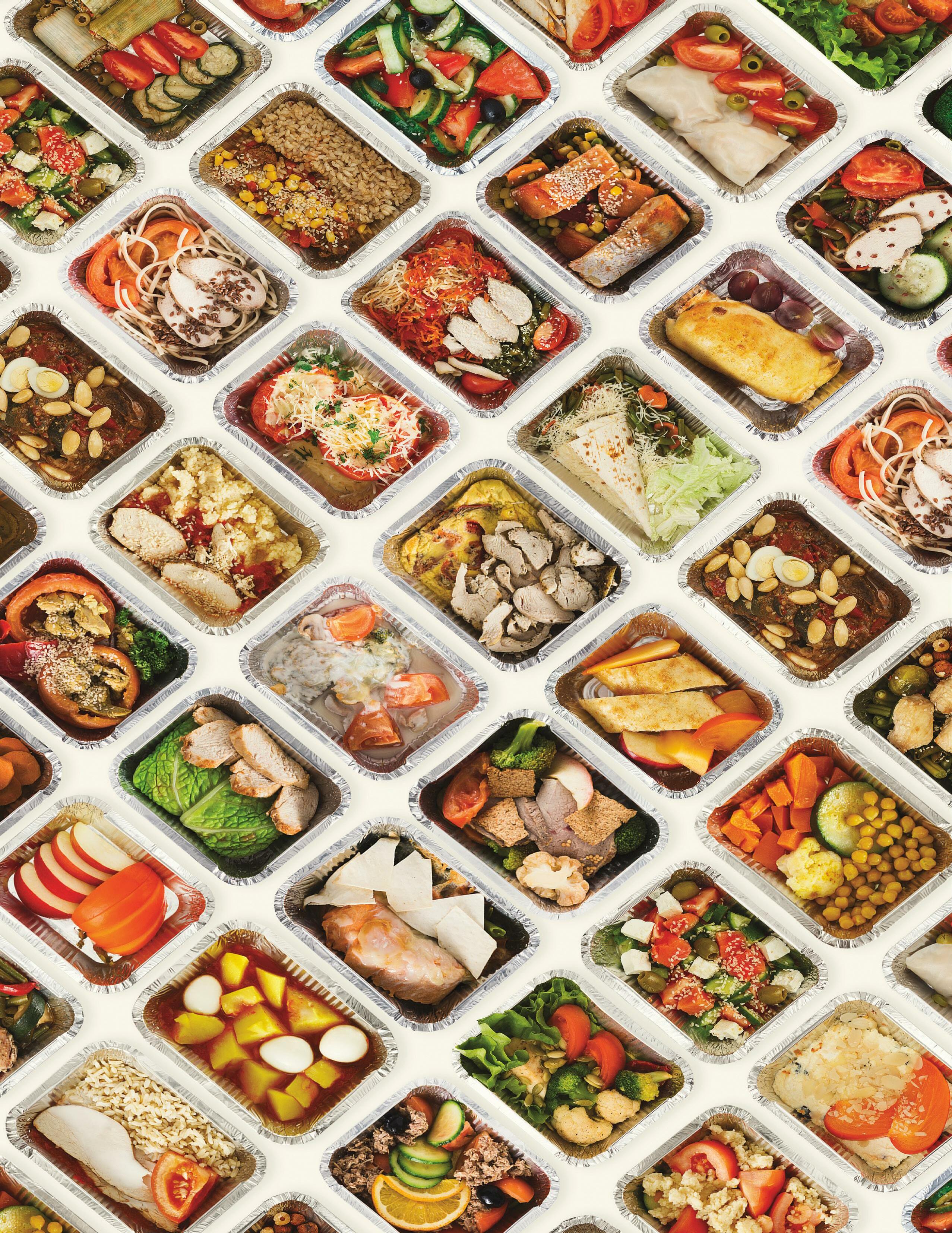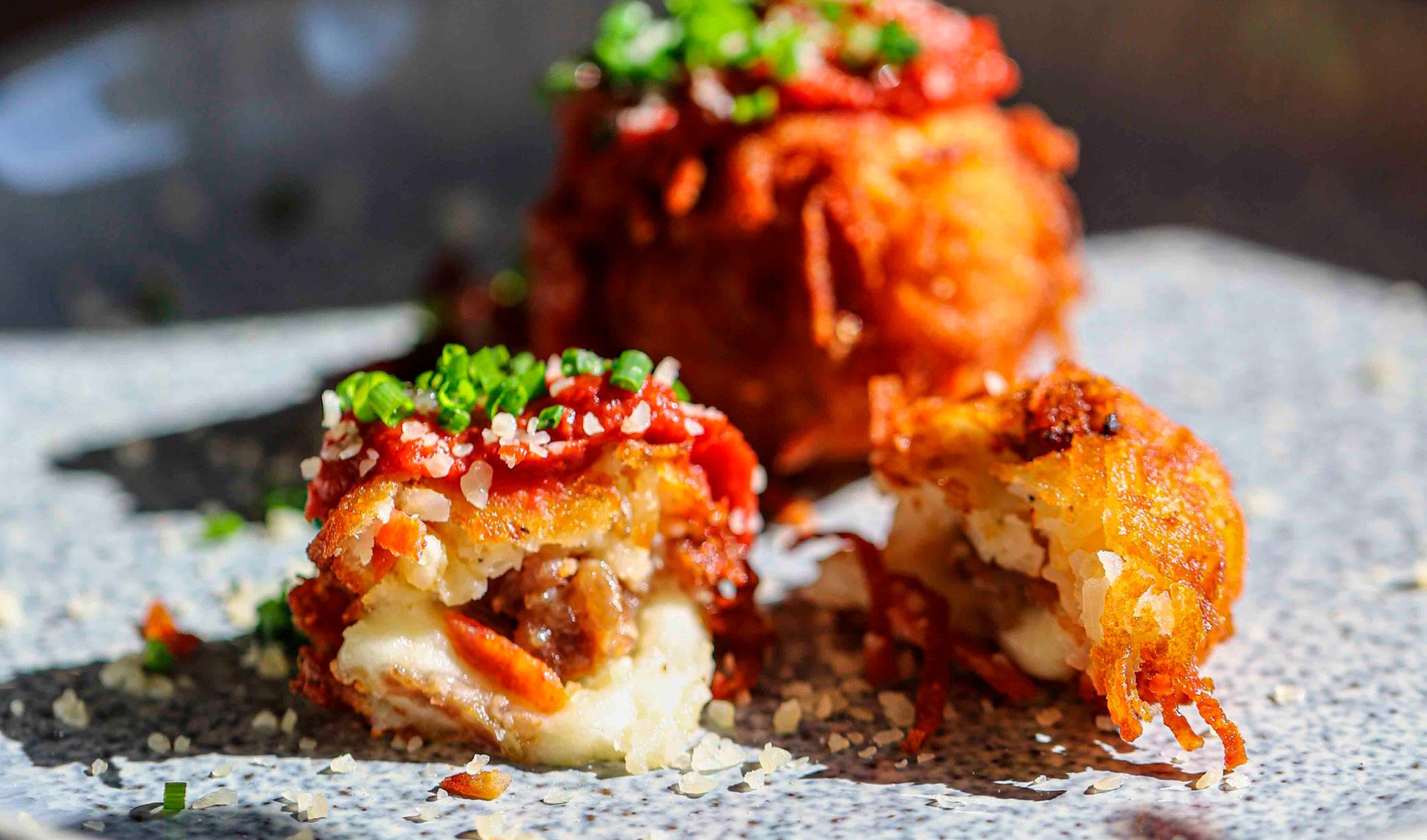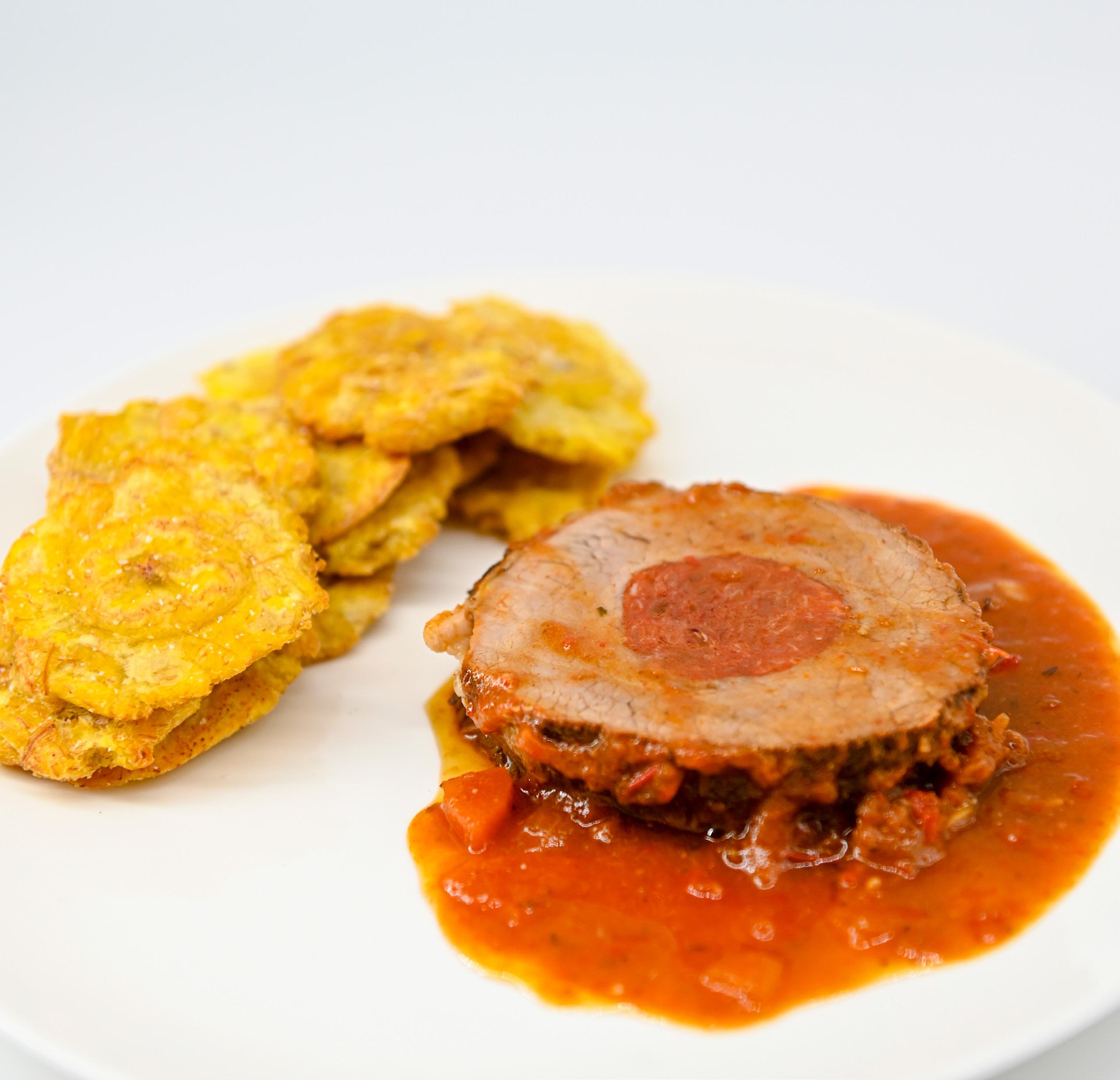
11 minute read
Health
from National Culinary Federation (Jan/Feb 2021)
by National Culinary Review (an American Culinary Federation publication)
CULINARY MEDICINE TODAY
Chefs and doctors work together to tackle some of our biggest health issues - especially during a global pandemic // By Samantha Lande
Gone are the days where a heart-healthy meal in a restaurant, denoted by a heart icon on the menu, meant a bland piece of fish and steamed vegetables. These days, many consumers are more aware of ways to make healthier choices in restaurants, and perhaps more willing to trust that chefs can make dishes tasty and healthy.
Obesity, heart disease and diabetes remain major problems in our country. Throw in a pandemic, and things get even more complicated; the Centers for Disease Control (CDC), noted that those with a BMI over 30 are at an increased risk of contracting a more severe course of COVID-19, and are three times as likely to be hospitalized.
At the same time, As many as 85% of Americans have made changes in the food they eat or how they prepare food because of the coronavirus (COVID-19) pandemic, according to the International Food Information Council’s (IFIC) 2020 Food and Health Survey. About 20% reported eating healthier than usual, eating more than usual and eating more pre-made meals from their pantry or freezer. Some of these changes had direct links to special diets; 43% of consumers reported following a specific diet or eating pattern (such as intermittent fasting, and ketogenic diets), up from 38% in 2019 and 36% in 2018. Nearly 30% of consumers said they ate more protein from plant sources, and 24% said they ate more plant-based dairy.
At a time when consumers are savvy to the need for healthy food, chefs have access to more ingredients than ever before, and physicians are battling a slew of preventable long-term diseases, culinary medicine is becoming more of a focus in educational institutions.
CULINARY MEDICINE DEFINED
Culinary medicine isn’t a new concept; The Goldring Center for Culinary Medicine (GCCM) at Tulane University was founded nearly a decade ago, in 2012, as the first teaching kitchen operated within a medical school.
“We built a teaching kitchen with the idea that we were going to teach medical students how to cook, to help change dialogues about food with patients,” says Dr. Timothy Harlan, GCCM’s former executive director and the current executive director at George Washington University Culinary Medicine Program in Washington, D.C.
Dr. Harlan is no stranger to the kitchen, having worked as a chef and restaurateur himself in the ‘80s before returning to medical school.
“What many doctors used to do was hand their patients a piece of paper denoting a list of foods they should and should not eat with their particular disease or diagnosis,” he says. “It was then up to the patients to figure it out.” Dr. Harlan, therefore, searched for a way to meet “at the intersection of food and health,” he says. Part of this includes

Left: Dr. Timothy Harlan, GCCM’s former executive director and the current executive director at George Washington University Culinary Medicine Program in Washington, D.C. Right: Robb Seltzer, Hospitality instructor at the University of Central Florida
examining Eastern medicine practices and cultures that use certain foods like turmeric and other spices and herbs for healing, although Dr. Harlan’s quick to note his program focuses on evidence-based studies when making final recommendations.
TEACHING CULINARY MEDICINE
Dr. Harlan’s health-meets-food curriculum is now taught in more than 60 programs across the country, from medical schools to nursing and other residency programs. One of those schools is the University of Central Florida, where Hospitality Instructor Robb Seltzer leads a collaboration between the Rosen College of Hospitality Management and the UFC College of Medicine. Much of his culinary nutrition curriculum is based around elements of the Mediterranean diet, which is rich in fruits, vegetables, whole grains and healthy fats.
“There has been evidence showing a Mediterranean diet can reduce risk of death from causes like heart disease, diabetes and even some cancers by” he says.
The coursework starts with basic knife skills and sanitation before moving onto disease-specific courses focusing on the Mediterranean diet foods and food combinations that can help prevent or manage ailments such as cardiovascular disease, hypertension, renal (kidney) disease, diabetes and more.
Programs like this, whether in a medical school or a culinary school, are geared toward meeting the guest, patient and other members of the community where they are, in terms of what they enjoy eating, and helping them understand how they can improve their health through different foods. “The goal is to train our chefs to go out and teach people how to cook and eat better,” Seltzer says.
OPPORTUNITIES FOR CHEFS
As culinary medicine becomes a bigger part of our vernacular and more consumers seek out healthy foods, there will be an even bigger role for chefs to play. Chefs who cook in nursing homes, restaurants, schools or just about anywhere have the opportunity to learn about and add nutrition to whatever they cook.
As Chef Leah Sarris, RD, LDN, executive director, New Orleans Culinary & Hospitality Institute, says, “Chefs have a moral obligation to serve people healthy

-CHEF LEAH SARRIS, RD, LDN
food.” Even small tweaks to dishes can make a huge difference in health.
Hyperlocal and hyper-seasonal ingredients are not just tasty and trendy, she says; they also make food healthier because they are typically more nutrientdense. “You can actually save money by [focusing] on beautiful, fresh veggies and interesting grains while including fewer ounces of a protein,” she says.
Another tip from Chef Sarris is to make vegetarian options more filling. “A plate of vegetables will likely leave your vegetarian guests unsatisfied, so learning how to make it filling with elements of protein, fat and fiber is key.”
Still, she doesn’t necessarily recommend advertising these dishes as the “healthier option.” “Guests often think the ‘healthy’ option won’t taste good,” she says. “If you use innovative cooking techniques that are naturally better for you, like sous vide, or pesto instead of heavy cream sauces, your guests will get a flavor-packed, healthy meal without the blunt advertising.”
Chef Emily Schlag, RD, the former director at SBH Center for Culinary Medicine and Teaching Kitchen in New Orleans, who is in the process of building a teaching kitchen and program in the Bronx in New York, thinks it’s essential to “take favorites and show people small changes they can make to these dishes and make them better for them,” she says. For instance, the Bronx has large Puerto Rican and Dominican communities, so she’s focused on “healthifying” dishes like arroz con pollo by using salt-free or DIY spice blends, as well as using unsalted chicken stock or sodium-free chicken bouillon to reduce sodium, and swapping white rice for brown.
As we continue to navigate the COVID-19 pandemic, Dr. Harlan says, “We can certainly hypothesize that [the pandemic] has increased people’s awareness of obesity as a primarily inflammatory disease.” That means chefs who know how to cook and use food as medicine can literally help save lives.
Samantha Lande is a freelance writer based in Chicago. Her work has appeared in Food Network, Chowhound, Time Out and other local and national publications.
IT’S ALL CONNECTED
From our brains and guts to our individual genetic makeup, our bodies have a symbiotic relationship with the foods we choose to eat.
That’s the message that Chef Michael Fenster, M.D. (aka, Chef Dr. Mike), promotes for understanding the evolution of nutrition. He’s the professor of culinary medicine at the University of Montana Missoula College and the University of Montana’s College of Health.
Sure, we know now that whole foods are better for you than processed ones. “You could be a vegan, but if you subsist on French fries and vegan brownies, that doesn’t make you healthier than someone who eats grass-fed beef in moderation,” he says.
There’s also plenty we still don’t know about the ways foods interact with our bodies. Scientists can identify certain vitamins and minerals in fruits, vegetables and proteins, but these foods also have lesser-understood bioactive compounds that can have an even more profound impact on our health.
The story gets even more complicated when you introduce genes into the mix. Depending on our individual DNA and genetic makeup, certain foods can have good or bad health implications for us. “I can eat walnuts and pecans, which are a great source of pleasure, taste and nutrition for me, but if my wife eats them, she could die,” he says.
These individualized nuances make it challenging for doctors and dietitians to develop a one-size-fits all diet or nutrition solution for the general public. It also makes things more complicated for chefs trying to figure out what to serve or not serve on menus.
However, chefs can incorporate some of the basic premises of culinary medicine into their practice to help consumers improve their overall health and wellness — and by doing so, set their cuisine apart from the competition. Check out these three tips.

Create opportunities for mindful eating.
The idea of mindful eating goes beyond just choosing to eat healthful foods. “We’re seeing more studies that show how we eat, when we eat, with whom we eat, and our mental state when we engage in the act of consumption have a profound impact on our health, in ways we’re only beginning to understand,” Dr. Fenster says.
Hospitality fits directly into this solution. “When we’re dining out, and we are relaxed and happy because our food experience was so good, this has a direct impact on our health,” he adds. “That’s why a medical approach alone — eat more greens, take this pill and stop going to the drive-thru — doesn’t work.” Chefs who focus on the experience as much as on the food can be contribute to this more holistic approach. Even if it’s a take-out meal with a little note attached or a healthy meal kit with personalized recipe instructions, hospitality can transcend brick-and-mortar borders.
Focus on helping customers improve their gut health.
We now know that our overall wellness is, in part, directly tied to our gut health and gut microbiome.
“The types of foods we eat can grow healthy bacteria in our gut that can [produce] serotonin and literally make us happier,” Dr. Fenster says. The wrong food and drink choices can also strip away this good bacteria, making the center of our bodies a breeding ground for less-beneficial bacteria that affect our organs as well as our brain and mental health.
While many plant foods like garlic, onion and leafy greens introduce prebiotics to our system, fermented foods are the probiotic powerhouses of which we don’t get nearly enough. Ferments such as kimchi and sauerkraut — not sugary yogurt or a pill — help us achieve better gut health.
Dr. Fenster also points out, “All fermented foods are pickled, but not all pickled foods are fermented.” For chefs, fermented foods can be challenging to menu, depending on local health department regulations or the nature of their customer base (e.g., high-risk populations), but it’s worth looking into what’s possible. Even putting sourdough bread—a natural ferment— on the menu, or exploring FDAapproved fermented products counts.
Educate, educate, educate.
The third piece of the puzzle is education. “It’s not enough anymore to just source organically or from the farmers market; whenever [chefs] do so, they need to let their customer know, because those who are interested in improving their health will seek out those [restaurants] first,” Dr. Fenster says. “Those are also the places I encourage my patients to visit.”
Indeed, when it comes to modern culinary medicine, chefs can benefit from educating their customers, Dr. Fenster says: “When chefs make an effort to source the best ingredients and create the best experiences for enjoying those foods, and also educate their customers about their menu choices, [healthdriven people] develop true brand loyalty.” – Amelia Levin

ACF ChefsForum Sponsors



NCR Quiz
January/February 2021
By LeeAnn Corrao, CFC®
What is sofrito? a. A Indian dish b. A spice c. A base used in Latin American cooking d. A drink with lime juice
Which of the following is not an ingredient in the classical preparation of Boliche Cubano? a. Citrus b. Chorizo c. Onions d. Eggs
The U.S Environmental Protection Agency reported that containers and packaging constitute of all waste? a. 10% b. 20% c. 30% d. 40%

In addition to helping the environment, what is a benefit of nondisposable packaging? a. Non-disposable containers keep food warmer b. Non-disposable containers are less flimsy c. Non-disposable containers can boost your bottom line d. All of the above

The long shelf-life of a potato helps reduce food waste. a. True b. False
According to the IFIC, 85% of Americans claimed that they have made changes in their diet because of . a. Food allergies b. The COVID-19 pandemic c. Heart disease d. Fad dieting
According to Chef Chris Bugher, the act of melting cheese is a balance between moisture, age and . a. Acid content b. Time c. Temperature d. Salt content
Who is the current president of the ACF Young Chef's Club? a. Ashten Garrett b. Jamie Simpson c. Julia Spondike d. Alain Ducasse










